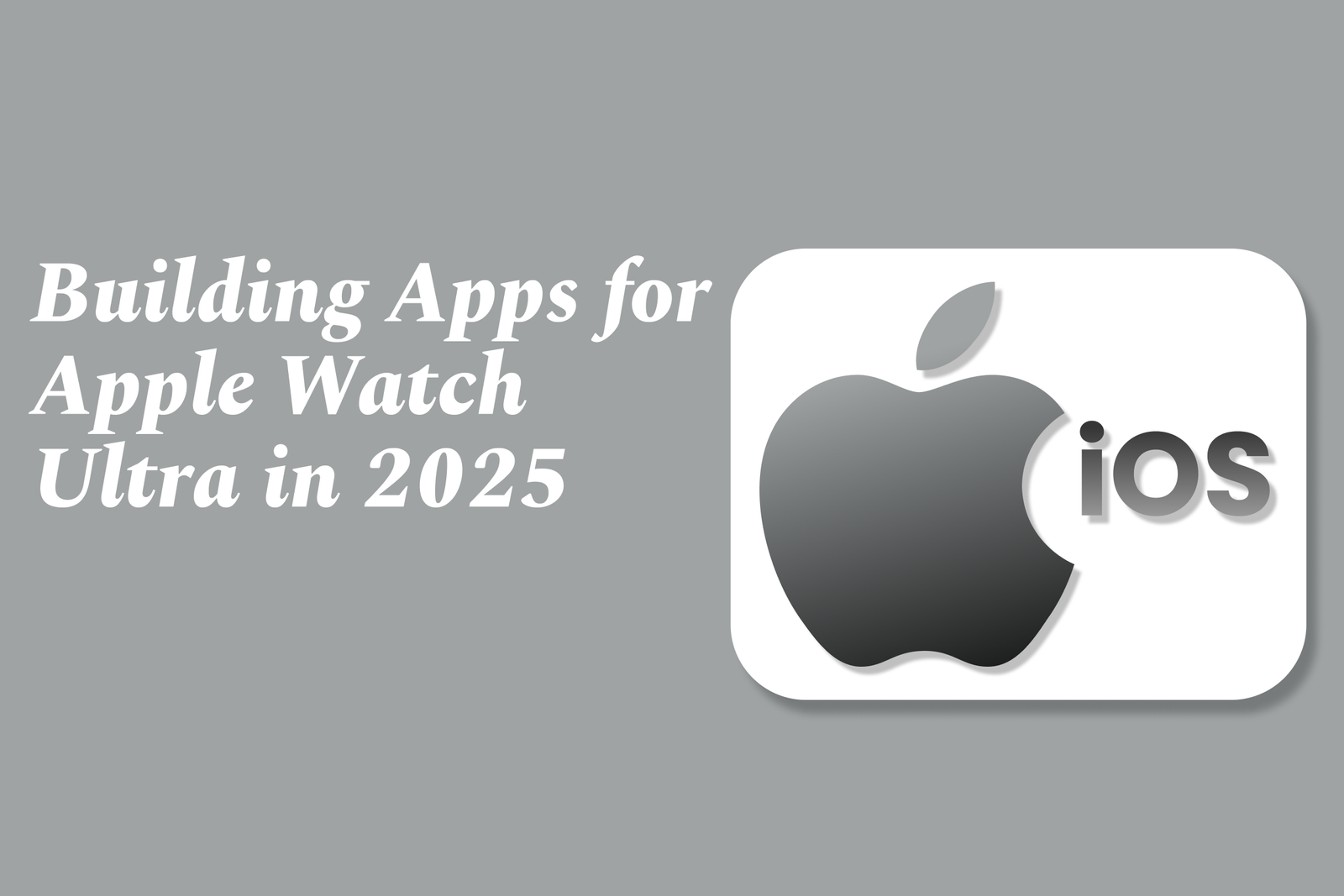Building Apps for Apple Watch Ultra in 2025
Building apps for Apple Watch Ultra in 2025 means creating optimized, user-friendly applications that leverage its advanced sensors, larger display, and improved battery. Developers focus on seamless performance, updated watchOS features, and strict compliance with App Store guidelines for a premium experience.
Building Apps for Apple Watch Ultra in 2025
1 ) Overview of the Apple Watch Ultra Ecosystem
The Apple Watch Ultra continues to dominate the premium smartwatch market in 2025. It features advanced hardware and software capabilities catered to fitness, health, and outdoor activities. Developers are focusing on leveraging these features to create immersive and tailored apps.
2 ) Key Development Considerations
Hardware Utilization: The Ultra model boasts enhanced sensors, better battery life, and a larger, more vibrant display. Apps should leverage these to offer real time health tracking, environmental data, and extended usage without battery drain.
Performance Optimization: Given the watch’s processing power, developers must optimize apps for smooth operation, balancing performance and energy efficiency.
User Interface (UI): The UI must conform to Apple’s latest design guidelines for watchOS 10+, ensuring intuitive navigation and accessibility on the Ultra’s larger screen.
3 ) Tools and Resources
Developers are encouraged to use the latest Apple Design Resources, including updated UI kits and icon templates for watchOS, ensuring pixel perfect app design tailored for the Ultra’s display. These resources are regularly updated in formats like Figma and Sketch as of mid 2025.
4 ) Platform Support and Compatibility
Applications must be compatible with watchOS 10 and above, targeting the Apple Watch Ultra’s hardware and software ecosystem. This includes support for new APIs related to health metrics, environmental awareness, and haptic feedback enhancements.
5 ) Age Rating and Policy Compliance
The App Store has introduced a more granular age rating system with new questions regarding sensitive content, in app controls, and medical or wellness topics. Developers need to carefully assess their apps against these guidelines to ensure proper age classifications.
6 ) Community and Ecosystem Connectivity
Active communities such as r/applewatchultra on Reddit provide developers and users a platform to discuss app ideas, best practices, and user experiences, fostering a vibrant ecosystem and feedback loop.
7 ) Design and Theming
Dark and light modes remain critical design aspects. Apps should adapt seamlessly to the user's preferred theme or system settings, providing a visually comfortable experience that complements the Ultra’s vivid display.
8 ) Distribution and Analytics
Developers should utilize Apple's established analytics and distribution channels, using tagged analytics regions and well structured navigation paths to maximize app visibility and user engagement on the App Store.
9 ) Future Trends and Updates
Innovation continues with watchOS updates, new developer tools, and expanding device capabilities. Staying updated with Apple Developer news and participating in beta releases will help developers optimize their apps for the evolving Apple Watch Ultra platform.
Summary:
Developing apps for the Apple Watch Ultra in 2025 involves harnessing its advanced hardware and software features, abiding by updated design and App Store policies, and engaging with an active developer community. Emphasis on optimized performance, user centric UI, comprehensive use of new APIs, and adherence to age ratings are essential for creating standout applications on this cutting edge device.
https://justacademy.in/news-detail/flutter-and-tensorflow-lite-examples
https://justacademy.in/news-detail/android-launchers-with-new-capabilities
https://justacademy.in/news-detail/android-device-manufacturer-announcements
https://justacademy.in/news-detail/react-native?s-new-accessibility-widgets-rock
https://justacademy.in/news-detail/android-updates-for-foldable-phones
Related Posts
In 2025, top Angular libraries offer modern, feature-rich components and tools for building dynamic web apps. From powerful data grids to low-code platforms like UI Bakery, these libraries enhance development speed, UI design, and scalability, making them essential for Angular developers.
Migrating from AngularJS to Angular 17 involves gradually upgrading your app by running both frameworks together using tools like ngUpgrade, rewriting components in TypeScript, and adopting Angular’s modern architecture to enhance performance, maintainability, and long-term support.
Angular state management tools help organize and handle app data efficiently, improving scalability and maintainability. Popular options include NgRx for robust, RxJS-based patterns, and newer Signal Store solutions that offer simpler, reactive approaches integrated tightly with Angular’s latest features.
RxJS in Angular empowers developers to manage asynchronous data streams with powerful operators like `forkJoin`, `combineLatest`, and `zip`. Mastering these key operators in 2025 is essential for building efficient, reactive applications that handle complex event sequences seamlessly.
Angular performance optimization in 2025 focuses on improving app speed and responsiveness by using techniques like OnPush change detection, lazy loading, efficient data caching, and AOT compilation. These practices reduce load times, enhance user experience, and ensure scalable, fast Angular applications.
In 2025, Angular remains preferred for large-scale, enterprise apps with its robust, all-in-one framework, while Vue attracts developers seeking simplicity and fast development for smaller projects. Both frameworks excel, with choice driven by project needs and team expertise.
Angular Signals are a new reactive primitive in Angular 16 that enable fine-grained, efficient change detection by automatically tracking dependencies and updating only affected parts of the UI. They simplify state management and boost app performance, revolutionizing Angular's reactivity model.
Angular interview questions to prepare in 2025 focus on core concepts like components, directives, data binding, routing, and dependency injection, along with TypeScript mastery and latest Angular features to ensure strong practical knowledge for building scalable, efficient web applications.
AngularJS reached its official end of support in January 2022, meaning no further updates or security patches. To ensure app security and performance, developers should consider migrating to modern Angular versions or seek third-party long-term support options if immediate migration isn’t possible.
The Angular Roadmap 2025 highlights upcoming features focused on improving developer experience and performance, including zoneless Angular, Signals integration, enhanced Forms, async data handling, improved HMR, and expanded Angular Material/CDK enhancements, driving modern, efficient web app development.










